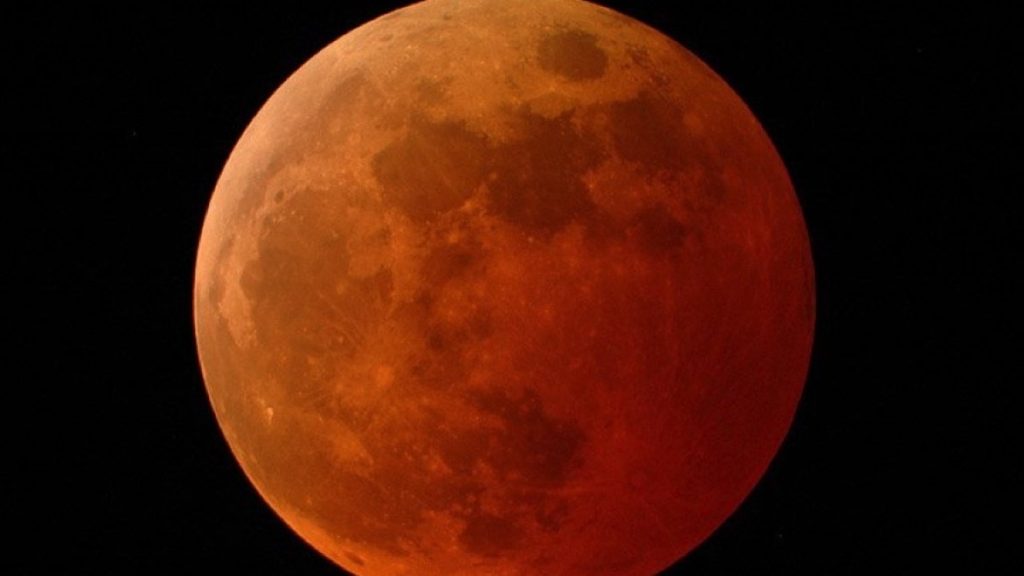Don’t miss it.
At 9:11 p.m. PST on May 15 (or 12:11 a.m. EST on May 16), the full moon will appear starkly red and eerie across the Lower 48 states. Other parts of the world, like South America, parts of Europe, and much of Africa, will experience the phenomenon, too.
It’s a total lunar eclipse. These happen during a special alignment between the moon, Earth, and sun. Specifically, the event occurs when the moon and sun line up on exact opposite sides of Earth, explains NASA. The moon falls into Earth’s shadow. But some sunlight still sneaks through our planet’s atmosphere, resulting in a reddish color reflecting off the moon’s surface.
A total lunar eclipse is always a terrific reason to stare up at our ever-expanding cosmos. Some will call this a “super blood moon,” or even other, longer names. You can, too. Or not.
Importantly, the lunar eclipse reaches its peak color intensity at 9:11 p.m. PST on May 15, but the event starts earlier as Earth progressively casts a shadow on the moon. For example, by 7:59 p.m. PST, half the moon will be in our planet’s shadow. And by 8:29 p.m., the moon will be vividly red. It will look something like this (clouds permitting!):

Credit: NASA
-
Stunning photo captures space station crossing the moon in jaw-dropping detail
-
A rocket will crash into the moon. It’ll leave way more than a scar.
The map below is another tool to help guide your eclipse-watching, depending on where you live. Totality (meaning the moon is covered in Earth’s shadow) begins at the yellow line and ends at the green line on May 15-16, 2022. (The times below are UTC.)
Credit: NASA
Revel in the wild, red moon!

